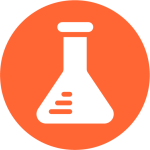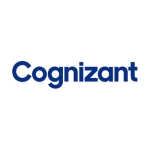There are tons of really valuable features. First of all, it's a model-based testing tool and the market of model-based testing is pretty narrow, and there are few offerings. I did extensive research in this area and at the moment CA Agile Requirements Designer is probably one of the best tools in the market. It allows you to utilize the full power of model-based testing using a simple method to build a workflow, which is more familiar to most software and test engineers than to business analysts or product managers.
It has a native engine that allows you to configure test coverage for your application model, and you can analyze this coverage by applying different optimizations. This really helps to make informed decisions when you're choosing the right amount of testing you need to apply. How not to over-test your application from one point of view, and from other point of view, how to guarantee 100% functional coverage in your testing. This is really crucial. Another great feature is that it can be integrated with test automation tools. This tool is agnostic can be integrated with a number of different products.
Another useful feature is the ability to integrate with a test data manager. For example, in my array, I don't have large databases from which I can get enough data for my testing. But other companies do have large data sets and they can integrate their testing tools with the databases to do sub-setting and masking. CA can also build synthetic data for testing. These are very powerful features that you can't find in other products. In this way, CA is in a unique position, because they offer these unique products with unique feature sets.
We have a number of challenges and one of the methods we use to solve these is model-based testing. That's what we're researching right now. We're doing a proof of concept with Agile Requirements Designer, which is pretty feature rich. ARD was a startup and CA bought it a little bit more than a year ago. Since then, the quality has greatly improved.
I don't know what improvements to make since we are not yet using this in production. We are still in the preliminary stages of testing. I plan to do more research on it. They're already doing the right thing. They're improving the integration with automation and that’s really important. However, the documentation is not clear regarding best practices, so that could be improved. Since it’s not likely that every automation framework can be easily integrated with CA ARD, it would be nice to have recommendations regarding what changes to make to the automation framework in order to successfully achieve that.
I’ve used CA for approximately for two months.
I haven’t used it for a very long time. The first version I tried had a lot of bugs. The version I tried in June or July was much more stable.
I think that it is scalable.
We worked with several people from CA and they did a really great job helping us familiarize ourselves with the tool. At the conference, I spoke with maybe five or six representatives; technical guys, sales guys, even feature developers, people with strong technical backgrounds and I got a lot of new information. It's cool. They're doing awesome stuff.
We hadn't used model-based testing tools before.
I am not the person who approves the budgeting, but I am the person who'll do the research and present the results to the decision makers.
We didn’t evaluate any other alternatives for model-based testing.
I think that this product is going to be very good, because of the team who develops it. They are trying to identify the important features the market wants and to implement them. They are also researching the best approaches to apply to particular cases.
If you're looking for model-based testing, I would advice to first to take a look at CA ARD. It's not a very complicated solution, so your learning curve will not be too steep. You’ll be able to quickly identify the core functionality. First, limit yourself to just model-based testing, then you can dive deeper and research different integration capabilities, such as how to integrate with automation and data management.













I hope I never have to create test cases another way again. CA Agile Designer has enabled us to increase our throughput far more than I could have imagined. Yes, you can create stories and export those stories. You can then create flows from those stories and... Sub-flows is the way to go in order to manage varying levels of flows.
Hint for managing large flows; What we tend to do is find the comfortable size to work with on the screen, this is different for different users but it's close to what would look good in a power point slide. We then block our flows with groups of nodes that fit within that window. Most blocks of data in desktop and web apps tend to fit in this type of view window. We then use color to frame those 'sections'. It looks good and shows well in a presentation. Good luck, use the community to help solve growing pains.